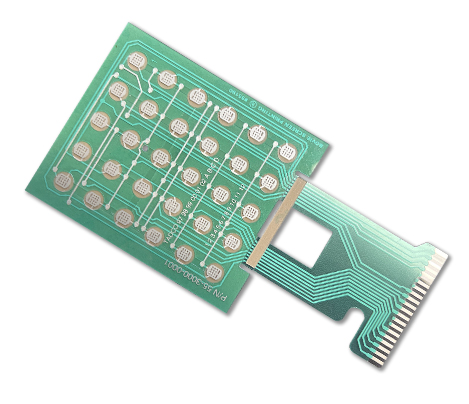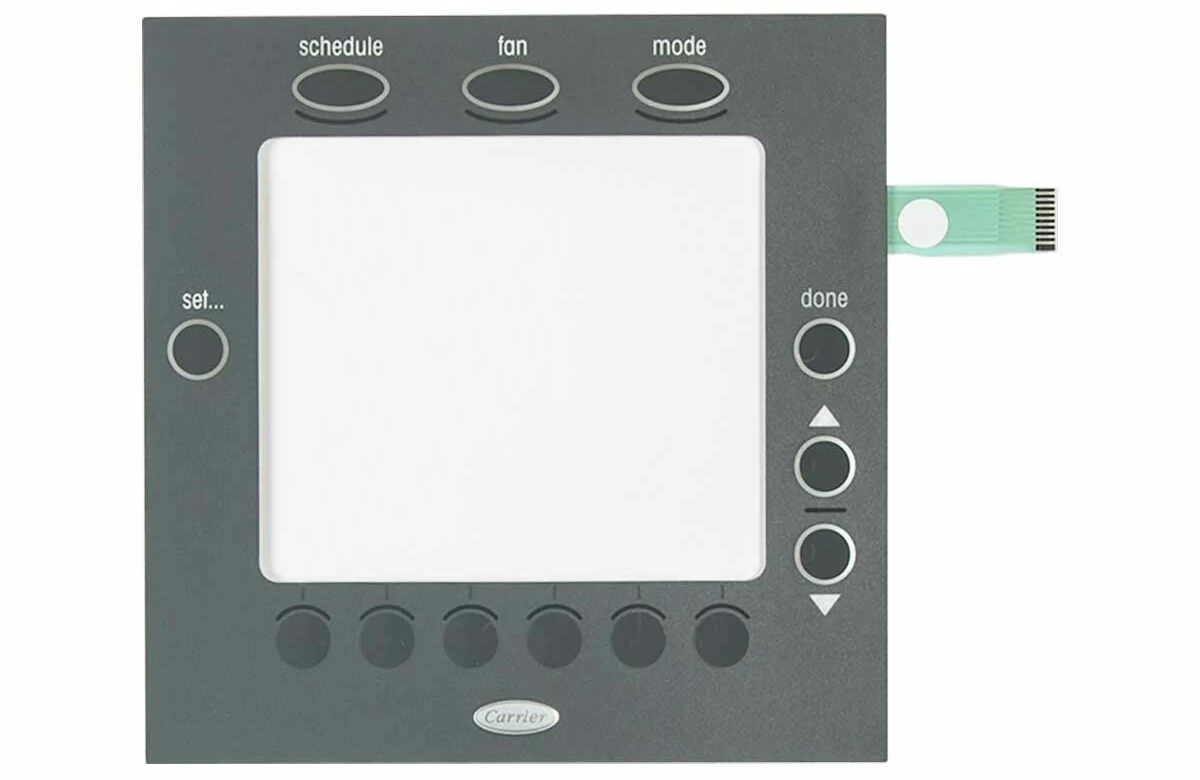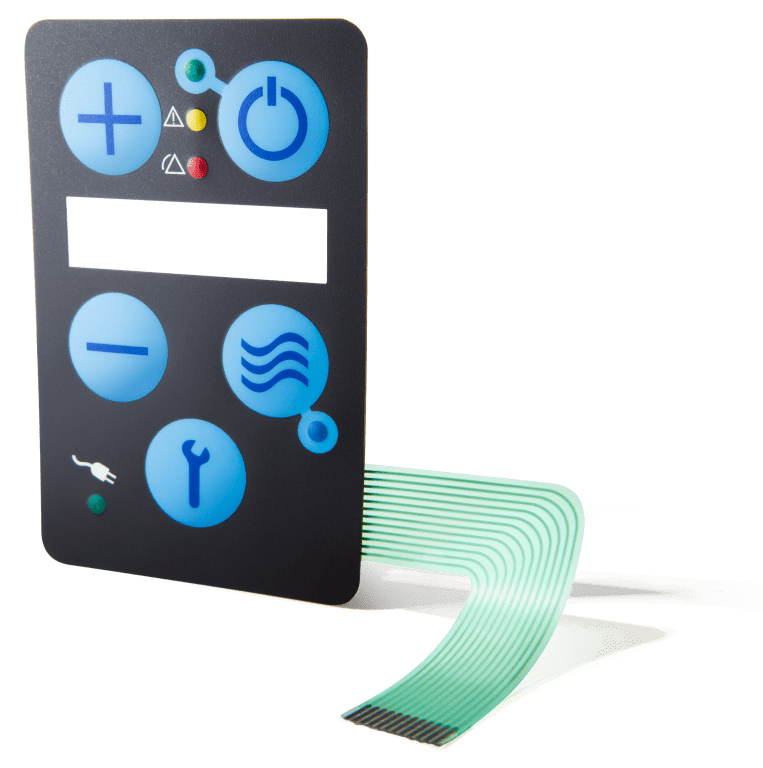A Comprehensive Guide to Membrane Switches for Product Designers
Understanding the Value of Membrane Switches in Interface
Membrane switches are important parts in the layout of reliable interface, assisting in not just capability but also improving aesthetic allure and customer communication. Their one-of-a-kind attributes, such as resistance to ecological elements and adjustable layouts, make them appropriate for a varied range of applications throughout several sectors. As we explore the various benefits and future trends associated with Membrane technology, it comes to be clear that these switches are a lot more than simply components; they represent a convergence of development and usefulness. The effects of this innovation on customer experience are worth analyzing better.
What Are Membrane Buttons?

The spacer layer, which contains adhesive buildings, enables the splitting up of the circuit layer from the overlay, guaranteeing that the button remains in a non-activated state up until pressed. When stress is used to the overlay, it presses the spacer layer, bridging the space and finishing the circuit in the underlying layer. This style not only reduces the physical area needed for typical mechanical switches yet additionally improves the toughness of the gadget, as Membrane buttons are usually immune to dirt, dampness, and other environmental elements.
Typically located in applications varying from consumer electronics to medical gadgets, Membrane switches are integral to modern-day technology, offering a effective and user-friendly interface that straightens with modern layout demands.
Benefits of Membrane Buttons
While numerous switch innovations exist, Membrane Switches offer distinctive advantages that make them specifically desirable in different applications. One of the main advantages of Membrane switches is their small style, which enables for space-saving implementations in devices where property is limited. Their thin profile not only improves aesthetic charm but additionally promotes light-weight construction.
One more substantial advantage is their resistance to environmental variables. Membrane switches are normally secured versus moisture, dirt, and impurities, making them excellent for usage in requiring settings, such as clinical tools and industrial tools. This toughness extends the life-span of the switch, lowering maintenance prices and improving dependability.
Moreover, Membrane switches can be personalized to satisfy particular design demands, integrating distinct graphics and colors that enhance individual communication. Their responsive responses options can likewise be customized to offer a gratifying customer experience. In addition, Membrane buttons are cost-efficient, specifically in high-volume applications, as they can be generated successfully.
Applications in Different Industries

In the consumer electronics field, Membrane switches are common in devices such as microwaves, cleaning makers, and remotes. Their responsive comments and visual choices improve user experience while offering a sleek, modern-day look. Furthermore, automobile makers use Membrane buttons in dashboard controls and infotainment systems, where room is restricted, and individual involvement is critical.
Moreover, the industrial field leverages Membrane switches in control panels for machinery and devices, enabling user-friendly procedure in commonly extreme environments. Their resistance to chemicals and moisture ensures longevity and integrity in these applications. In general, the adaptability of Membrane Switches contributes substantially to their extensive use, making them vital in various technological domain names.
Style Factors To Consider for Membrane Buttons

When creating Membrane switches, several crucial factors to consider have to be considered to ensure optimal performance and user experience. Firstly, the option of products is critical; selecting sturdy, top notch substrates can read what he said enhance the switch's durability and resistance to ecological aspects such as wetness and temperature fluctuations.
Secondly, the design of the graphic overlay need to focus on quality and ease of usage. Symbols and text need to be clear, and the layout must promote user-friendly communication (membrane switches). In addition, tactile feedback is important; including a responsive dome or various other mechanisms can boost the customer experience by offering physical confirmation of activation
An additional vital aspect is the button's electrical performance. Designers need to make certain that the conductive traces are correctly created to decrease resistance and prevent signal interference. This involves examining the needed actuation force and guaranteeing compatibility with the electronic elements they will interface with.

Future Fads in Membrane Modern Technology
As innovation proceeds to development, Membrane buttons are positioned to advance considerably, driven by technologies in products and producing techniques. One arising trend is the consolidation of sophisticated products, such as conductive inks and flexible substrates, which boost longevity and lower the total weight of Membrane buttons. These products not only improve the responsive action but additionally permit for the layout of switches that can stand up to harsher environmental problems.
Additionally, the combination of touch-sensitive innovations is transforming conventional Membrane Switches into even more interactive individual interfaces. Capacitive touch sensing units embedded within Membrane button panels can offer a much more receptive and user-friendly customer experience, straightening with the growing need for sleek, modern-day styles in consumer electronics.
In addition, advancements in printing methods, such as electronic and 3D printing, enable quick prototyping and personalization of Membrane buttons. This flexibility allows manufacturers to react quicker to market demands and customer choices.
Finally, sustainability is ending up being a considerable focus, with manufacturers exploring eco-friendly products and procedures. As these patterns unravel, the future of Membrane modern technology promises improved capability, visual allure, and environmental obligation, strengthening their role in innovative user interfaces throughout different markets.
Final Thought
In final thought, Membrane Switches stand for an important element in the layout of customer interfaces, integrating capability with aesthetic adaptability. Their advantages, consisting of durability Learn More Here and resistance to ecological elements, make them suitable for varied applications throughout different industries. Thoughtful style factors to consider enhance individual interaction and experience. As improvements in modern technology continue, the evolution of Membrane buttons is expected to further refine user interfaces, driving development and enhancing functionality in a progressively intricate technological landscape.
Membrane switches are indispensable parts in the anchor design of efficient user interfaces, promoting not just performance yet also boosting aesthetic appeal and user interaction.Membrane Switches offer as an essential element in different customer interfaces, facilitating a seamless communication in between customers and digital tools.While many button technologies exist, Membrane Switches offer unique advantages that make them especially desirable in different applications.Moreover, Membrane buttons can be tailored to meet details layout requirements, incorporating one-of-a-kind graphics and colors that boost individual interaction.In conclusion, Membrane Switches stand for a crucial element in the layout of individual interfaces, incorporating functionality with visual versatility.